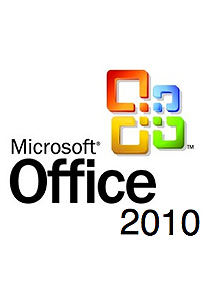|
Microsoft Office 2010
Review
Microsoft Office 2007 removed the old interface and introduced
the Microsoft Ribbon instead. Although the new interface is a little
confusing at first, it soon makes sense and makes jumping through
the suite of Ofiice programs a breeze. If you are still using Office
2003 then this is probably the next important upgrade.
Tie a ribbon
The main change between Office 2010 and Office 2007 is that the
Ribbon is now fully customisable. In 2007 you were stuck with the
default layout and couldn't do anything about it. In 2010 it's as
simple as right-clicking and selecting Customize Ribbon. You've then
got a simple list of commands that you can add and create your own
customised Ribbon
Microsoft Word 2010
Word is the application that's arguably finished. Nearly all
computer users are aware of the basic word functions and have at
some time used word or a very similar program.
Word 2010's new find function makes it much easier to locate a
word or phrase in a document. The Find tool. This opens up a
side-bar of results, giving you a short cutting of the surrounding
text for each result. This makes it very quick to skip to the result
that you want. It's also helpful that your search text is
highlighted in the body, so any reference can quickly be spotted on
the page.
One key new feature helps you recover documents when you
accidentally clicked the No button when you were asked if you wanted
to save them. This feature keeps the last The new MS Word has
AutoSave for any document that hasn't been manually saved and given
a filename. However, it only works after a document has been
Auto Saved, which by default is every ten minutes. In other words,
close a document down without saving before 10 minutes is up and
your file's as good as gone forever.
Unsaved documents can be accessed by clicking the Recover Unsaved
Documents button in the Recent files menu. With a faster AutoSave
time set, this feature could well prove invaluable.
Microsoft Excel 2010
Many of the improvements to other Office programs have focussed
either on more efficient working or more polished-looking content.
There’s some of this in Excel 2010 too, but there are also
interesting new number-crunching and data-analysis features.
Probably the one we liked best was the Slicer.
This is a simple tool for quickly selecting and displaying
information in a Pivot table. In our screenshot, for instance, we’ve
used the Slicer to quickly home in on just two cells in a table of
442 cells: allowing us to make a direct and meaningful comparison in
seconds.
With tools such as Slicer, Excel 2010 makes it easier to
productively work with and analyse large amounts of data.
Usefully, Microsoft has also added a search function to Pivot
tables, making it even easier to find a single variable. Another
exciting new feature, for business users, is PowerPivot, a free
download that allows you to import many millions of rows of data
from sources as varied other Excel workbooks, web sources and SQL
databases.
As with the rest of the suite, Excel 2010 has also been improved
in order to make it easier to share and collaborate online. The
web-based co-authoring tool allows you to collaborate on files that
have been saved to Windows Live SkyDrive. And with the Accessibility
Checker you can make sure that the files you create will be readable
for as wide and audience as possible.
Microsoft has also added the equation tool (for showing
mathematical equations) previously only available in Word 2007, to
this version of Excel. Given that working with numbers is Excel’s
primary function, it was odd not to have done this in the first
place.
|




